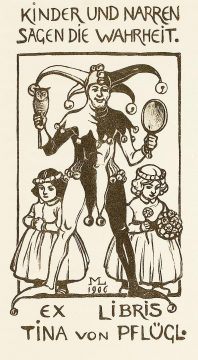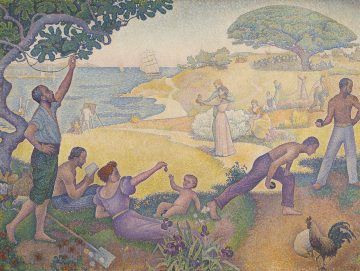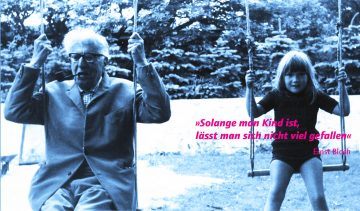by Chris Horner
Beauty is nothing more than the promise of happiness —Stendhal

How can beauty promise happiness? And what kind of beauty would this be? What sort of happiness? Happiness and Beauty have been central issues for thinkers since antiquity, and the question of what they really are, and whether we should even prize them as we do, have been subjected to sustained critique and discussion for millennia. I don’t intend to join that debate here. Happiness and Beauty: the more we try to get clear about them, the more they seem to recede from us. But, like Stendhal, we cannot do without them.
The origin of the quotation at the top of the page is his On Love, in a footnote in about the possibility of loving that which is ugly. He gives an anecdote about a man who falls in love, not with a woman who is conventionally beautiful but rather one who is not good looking, is too thin and is scarred with smallpox. He falls for her because she reminds him of a past love. Stendhal’s claim here is that beauty isn’t based on physical perfection. The idea of beauty is distinct from the physical form of the thing we desire. This may seem an odd way of conceiving of beauty, but it has a lineage that goes back to Plato. Beauty is kind of message or sign of something else.
Happiness, it seems, is elsewhere. We recall it or anticipate it, and the thing desired is somehow Other to where we are in space and time. The pursuit is not necessarily pleasurable, as the recollection of past happiness can be painful [1]. For Stendhal it is prompted by an erotic encounter, but presumably anything might serves as a trigger: the smell of autumn leaves, the hills in summer, a piece of music. One is reminded of Proust’s Madeleine, and the onrush of unbidden memory in his In Search of Lost Time. We are a long way from conventional ideas of harmony of form, or pleasing combinations of colour or tone. It seems to be less about beauty as it is usually understood, and more about a longed for state of felicity, however it is imagined: for past loves, for home, for childhood.
 Art, though, can be a powerful means to such an experience. The Fourth Symphony of Mahler, which is a very beautiful thing indeed in my estimation, has that effect on me. But unlike, say, the aroma of autumn leaves, the effect is calculated: it is something that is actually meant to be about being a child. [1]. We hear the jingle of bells, like the casting of a spell, and are transported to an imagined childhood. This is Mahler’s evocation, and in listening to it, although I was very affected, I did not have the sense that I was being carried back to a childhood that was mine, exactly, but rather an ideal or archetypal one. ‘Childhood’ itself is an adult category, of course, as we only really have it as concept, and can think and long for it when it has passed away from us. But even a happy childhood isn’t always a pleasant thing: it can contain many miseries: anxiety, dread even. And many real children are not happy at all, of course. In the Mahler piece we even hear something representing death playing a strangely tuned violin in the second movement, but the dread passes away, and comfort, bliss even, returns. Here is the idea of ‘another place’, not unclouded by anxiety, but essentially happy.
Art, though, can be a powerful means to such an experience. The Fourth Symphony of Mahler, which is a very beautiful thing indeed in my estimation, has that effect on me. But unlike, say, the aroma of autumn leaves, the effect is calculated: it is something that is actually meant to be about being a child. [1]. We hear the jingle of bells, like the casting of a spell, and are transported to an imagined childhood. This is Mahler’s evocation, and in listening to it, although I was very affected, I did not have the sense that I was being carried back to a childhood that was mine, exactly, but rather an ideal or archetypal one. ‘Childhood’ itself is an adult category, of course, as we only really have it as concept, and can think and long for it when it has passed away from us. But even a happy childhood isn’t always a pleasant thing: it can contain many miseries: anxiety, dread even. And many real children are not happy at all, of course. In the Mahler piece we even hear something representing death playing a strangely tuned violin in the second movement, but the dread passes away, and comfort, bliss even, returns. Here is the idea of ‘another place’, not unclouded by anxiety, but essentially happy.
 This evocation is an Idea of a happy time. It is at a distance, evoked here by art, and not necessarily a memory of a personal event or state. When we do recall a time in our own life, we tend to represent it as we do when we recount a dream, with multiple reworking. The dream itself was already a construction (a ‘dreamwork’), and each time we tell the dream, we work on it some more. So we come to remember the last time we recalled it, rather than the thing itself. This is a kind of ‘palimpsest’: like a manuscript that has been overwritten again and again. That doesn’t make it false, exactly, but rather something that has been veiled. The promise of happiness is of something we cannot quite grasp, something that recedes.
This evocation is an Idea of a happy time. It is at a distance, evoked here by art, and not necessarily a memory of a personal event or state. When we do recall a time in our own life, we tend to represent it as we do when we recount a dream, with multiple reworking. The dream itself was already a construction (a ‘dreamwork’), and each time we tell the dream, we work on it some more. So we come to remember the last time we recalled it, rather than the thing itself. This is a kind of ‘palimpsest’: like a manuscript that has been overwritten again and again. That doesn’t make it false, exactly, but rather something that has been veiled. The promise of happiness is of something we cannot quite grasp, something that recedes.
But why is it a promise? The present slips away even as we try to steady ourselves in it. Too much of it is disfigured by the regimentation of of the administered world, dulled by the compulsion of labour, wasted and emptied out by boredom, or driven by the joyless demand that we consume ever more, and even more. Promises are about futures.

Art and beauty can provoke pain or pleasure in the Now. But the provocation is also a promise of freedom. The utopia of the free person. The promise of joy, of Arcadia or Eden, is also and especially a message from the future. The philosopher Ernst Bloch’s term for this is Vorschein, or ‘anticipatory illumination’ – the light that the future reflects into the present, and into our memories. The home of childhood, the home the adult half dreams of in the daily round, is really longing for a free and happy life, for what Bloch called ‘the upright gait’: to straighten up and live in dignity, to be open to joy. A world where real children are not tormented and abused, and in which adults can experience life as it could be lived. That would take work as well as dreaming. Then the promise might be fulfilled.

[1] Nostalgia is derived from Greek words meaning ‘homecoming’ and ‘pain’.
[2] The last movement of the symphony is ‘The child’s vision of heaven’. The number of compositions that evoke the memory of childhood is legion – Schumann’s Kinderszenen comes to mind as just one of many. In literature too, the theme is often returned to again and again. Wordsworth’s The Prelude comes to mind as just one famous example. Alain-Fournier’s Le Grand Meaulnes is perhaps the classic of the transition from childhood, from a kind of innocence to experience. But there are so many more.
